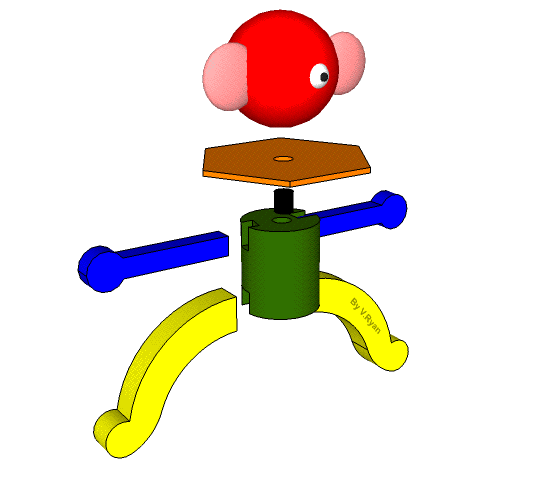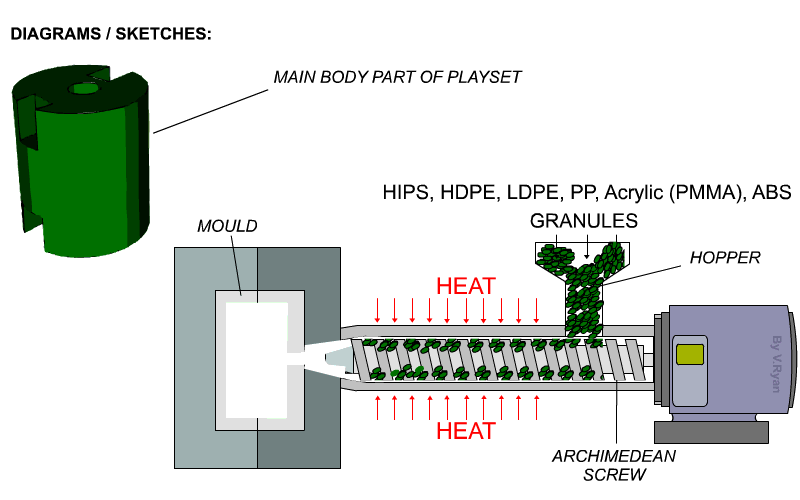| CLICK HERE FOR INDEX PAGE |
| EXAMINATION QUESTION INJECTION MOULDING HIPS, HDPE, LDPE, PP, ACRYLIC (PMMA), ABS. |
| V. Ryan © 2011 |
| PDF FILE - CLICK HERE FOR PRINTABLE WORKSHEET |
|
The photographs below show a child’s toy. The toy is constructed from a playset, made up of many different heads, arms, bodies etc... each part pushes in position, forming an entire character. A child using the playset can build a character, from any of the available interlocking parts. |
 |
| Name a polymer that is suitable for the manufacture of the playset parts. |
| ANY OF THE FOLLOWING - HIPS, HDPE, LDPE, PP, Acrylic (PMMA), ABS. |
| Why is the polymer you have named, suitable for the playset? |
| High Density Polyethylene (HDPE) is a suitable
thermoplastic for the manufacture of the playset parts. It can be injection moulded into integrate shapes, due to it’s thermoplastic properties. It starts in the form of granules, supplied in a range of pigmented colours. The range of colours means that different coloured parts can be made, making the palyset attractive to young children. HDPE is non-toxic and consequently safe for young children, even if they put the parts in their mouth. (Parents would be advise to supervise the use of the toy). HDPE is relatively cheap, which means a full set of parts is not excessively expensive, providing an affordable toy. The material is lightweight and comfortable for young children to handle. Injuries from this material are very unlikely. HDPE can be recycled, when the playset reaches the end of its useful working life. |
| The parts for the play set are manufactured through the process called injection moulding. Describe this process, using notes and diagrams/sketches. |
| NOTES: |
| 1. The HDPE granules are inserted into the hopper,
they drop down on to a rotating thread (Archimedean Screw) and travels
along its distance, at the same time being heated. 2. The HDPE granules melt as they travel inside the heated compartment. 3. When they arrived at the end of the chamber, the molten HDPE is injected into the mould. 4. The mould and its contents are allowed to cool. 5. Once cool, the mould opens and the HDPE part is removed. Some automated injection moulding machines, eject the completed part as the mould opens. 6. Once removed from the mould, the excess HDPE is removed and the part finished, quite often by hand. The excess HDPE can be recycled. |
 |
| CLICK HERE FOR RESISTANT MATERIALS INDEX PAGE |
| CLICK HERE FOR EQUIPMENT AND PROCESSES INDEX PAGE |